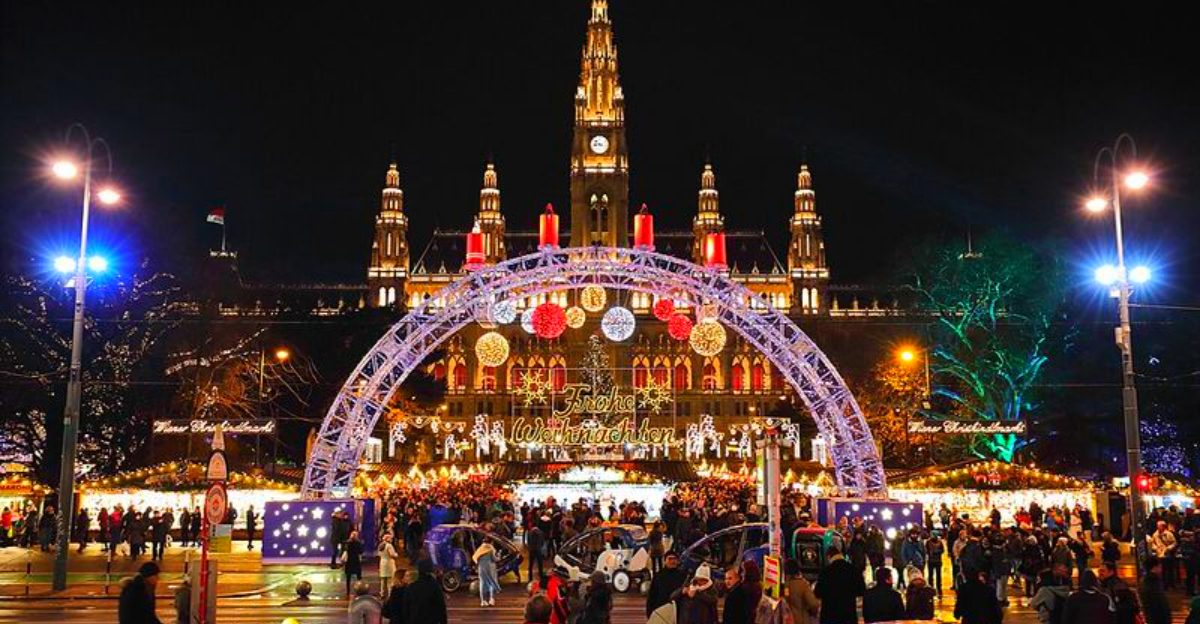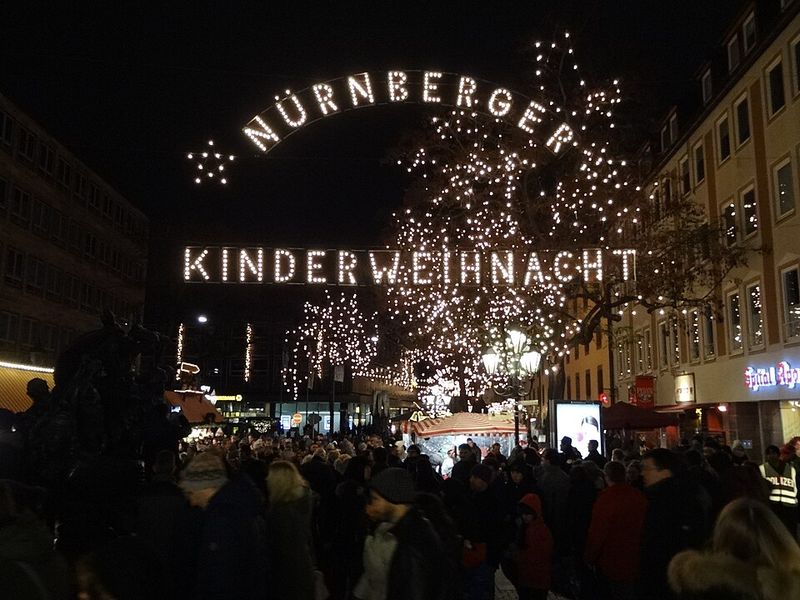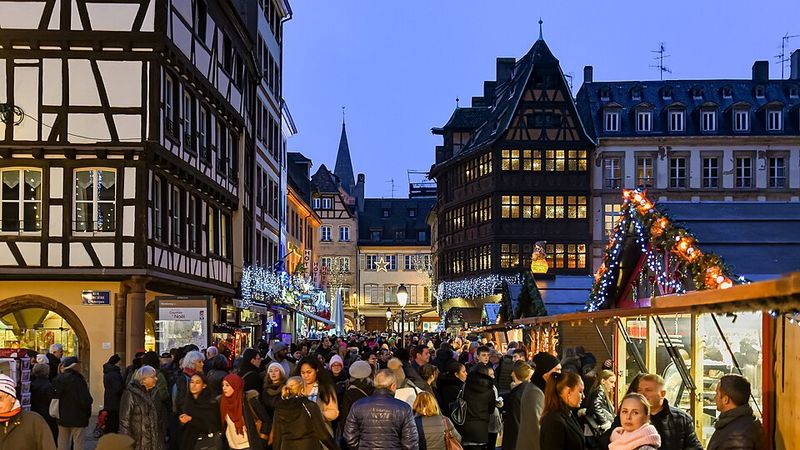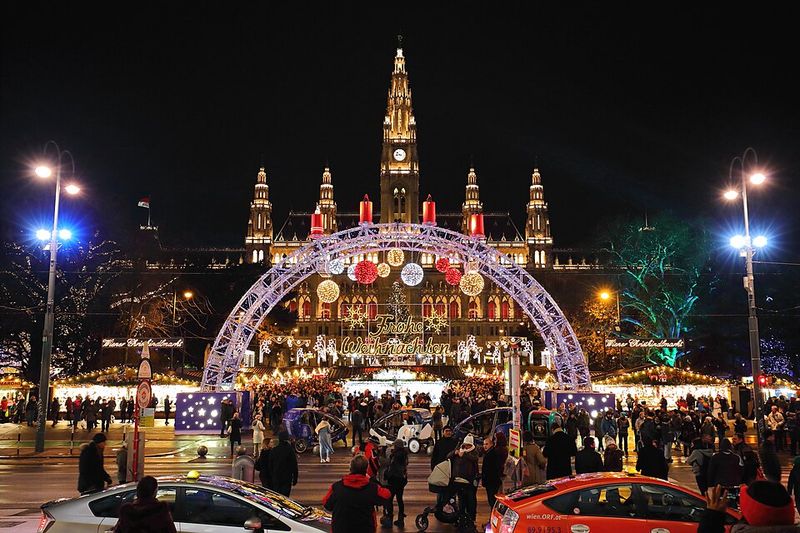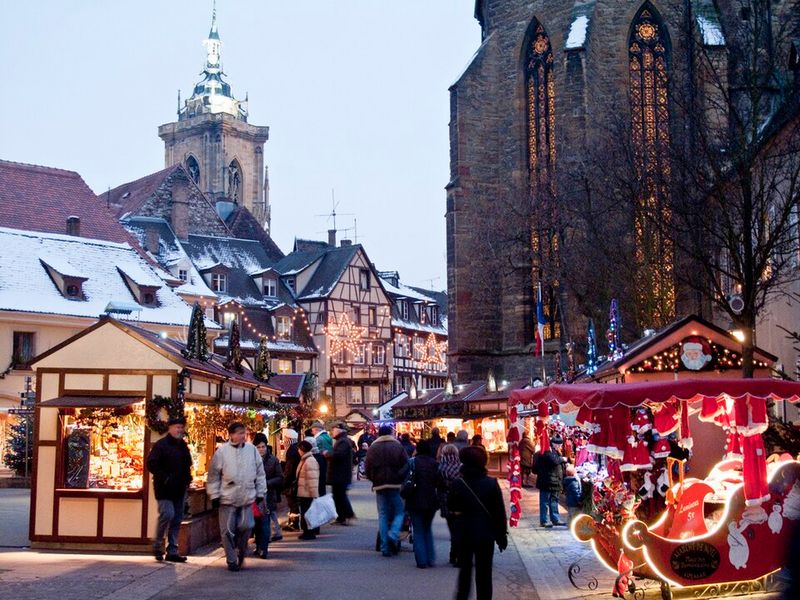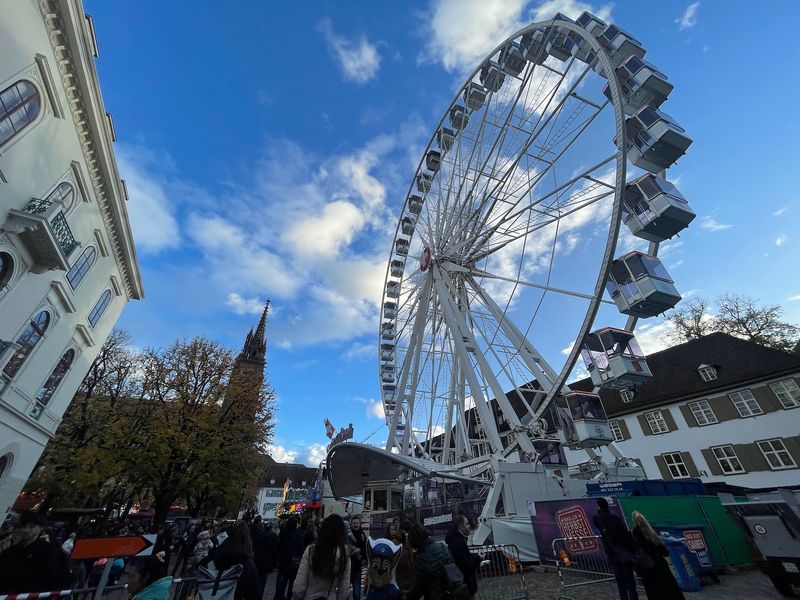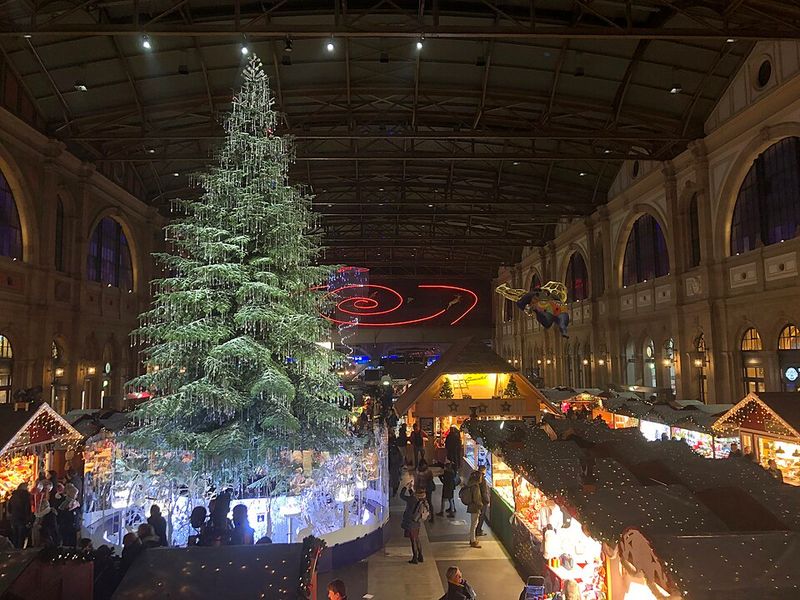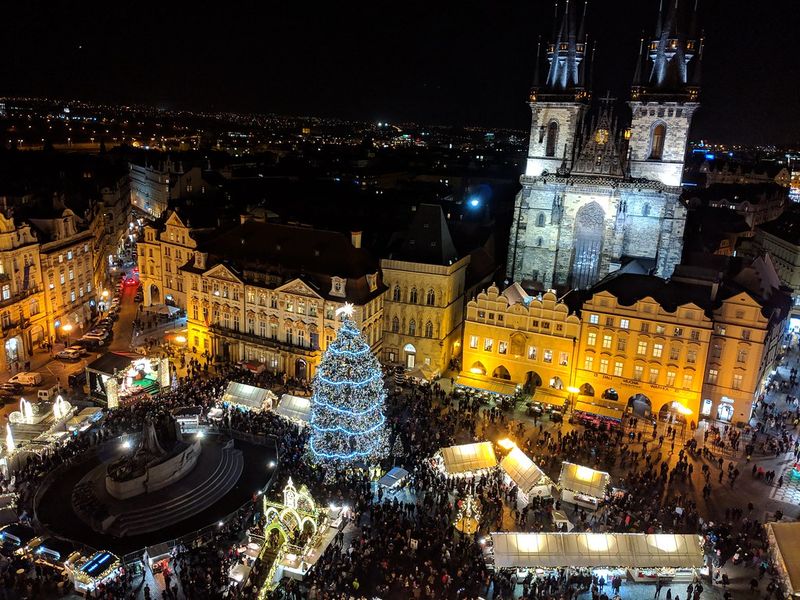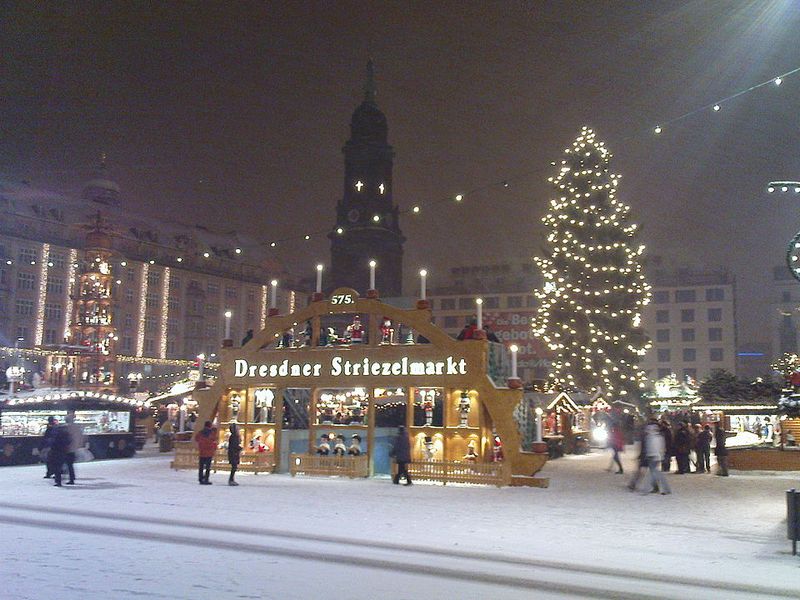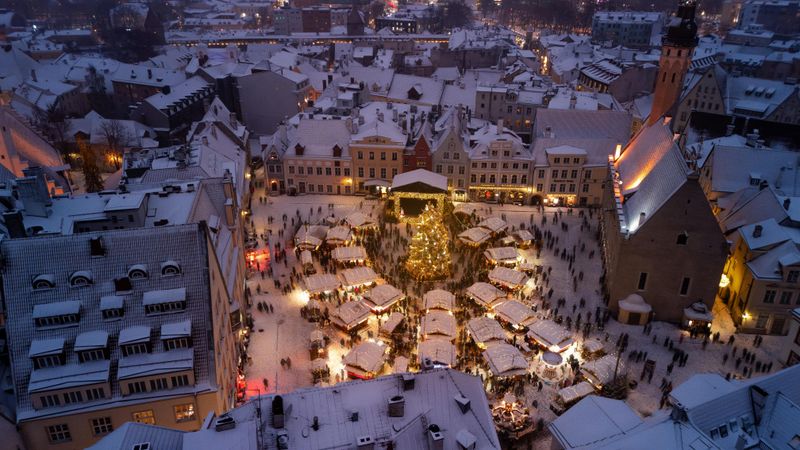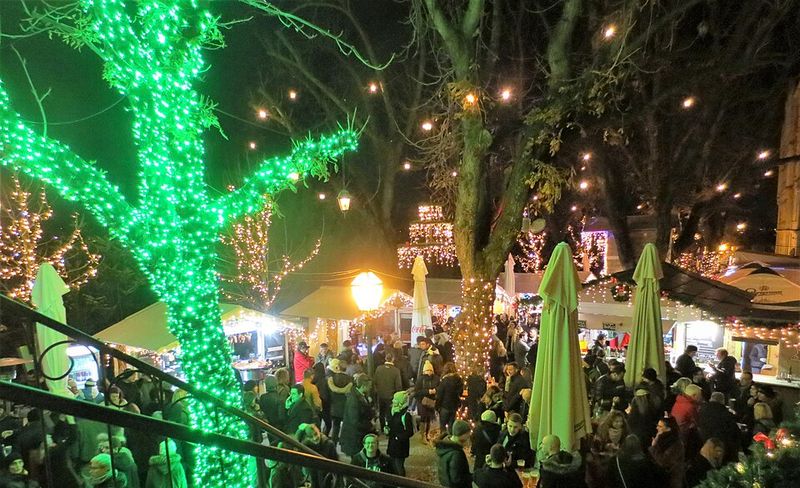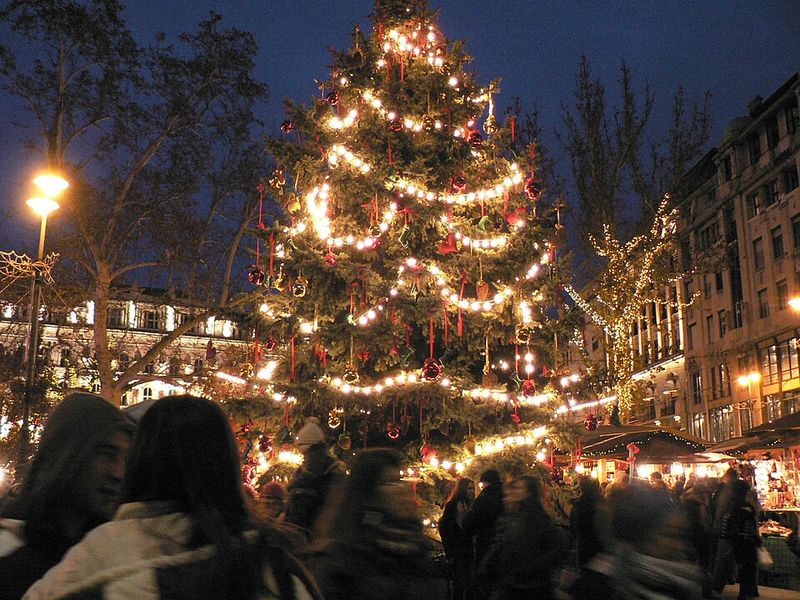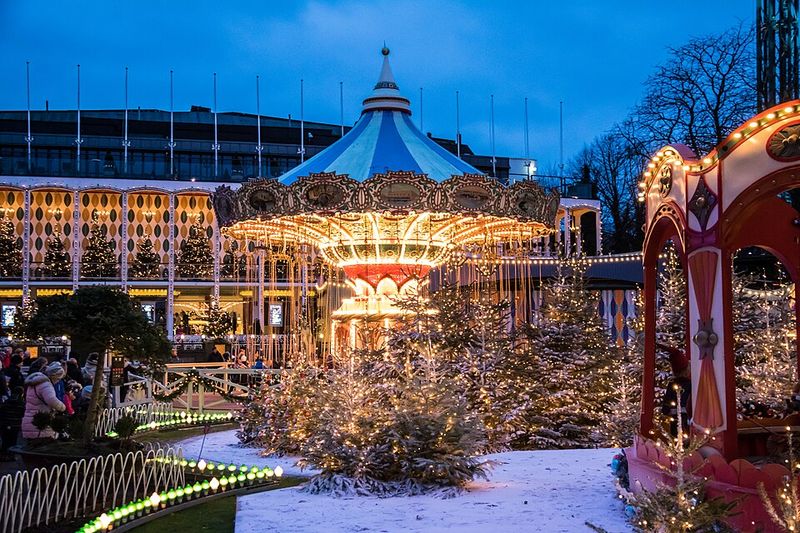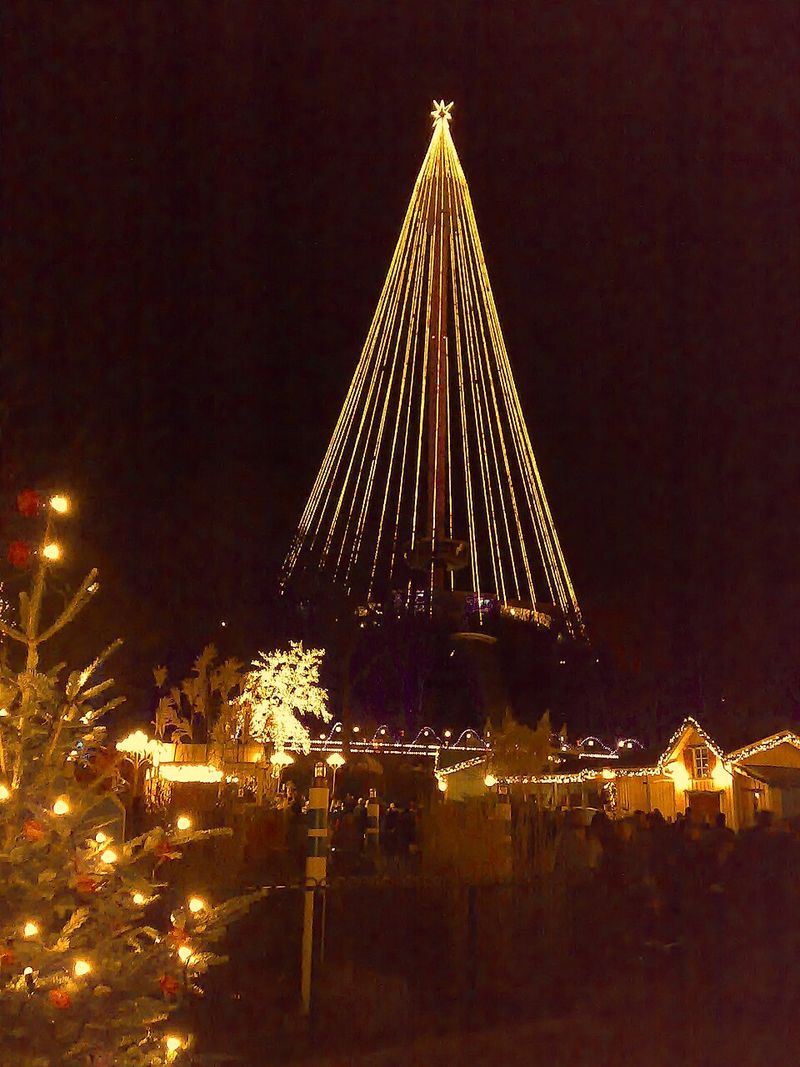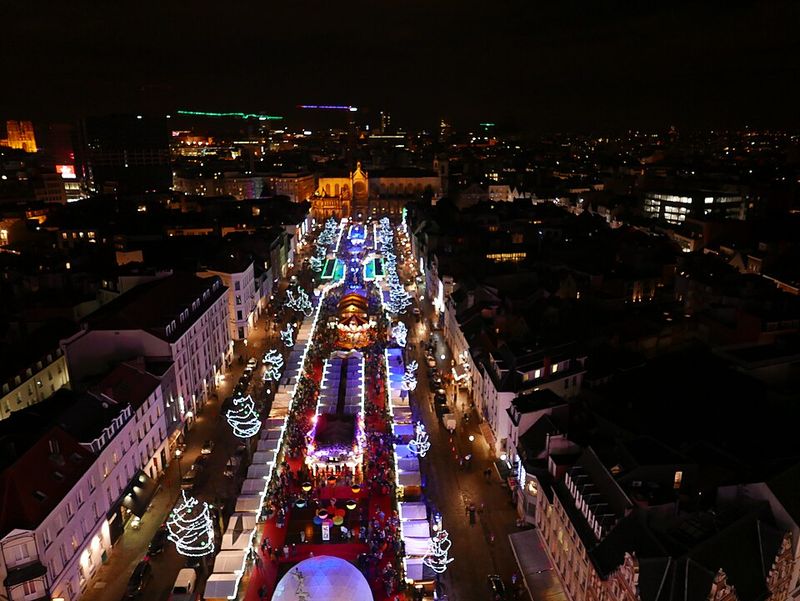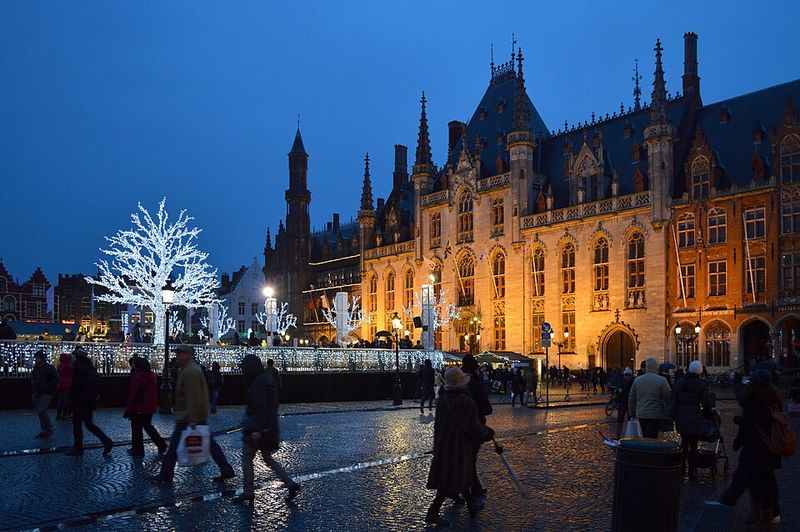Europe transforms into a winter wonderland when December arrives, with twinkling lights, the scent of roasted chestnuts, and festive cheer filling the air. Christmas markets across the continent offer families a chance to create lasting memories together, whether skating on ice rinks, riding Santa trains, or wandering through enchanting light displays. From medieval squares to lakeside villages, these markets combine tradition, entertainment, and holiday magic in ways that delight visitors of all ages. Planning your family’s European Christmas adventure has never been more exciting with these top destinations.
1. Nuremberg, Germany — Christkindlesmarkt + Kinderweihnacht
Nuremberg takes family-friendly to another level with Kinderweihnacht, a dedicated children’s market that runs alongside the famous Christkindlesmarkt. Toddlers and early elementary kids go wild for the miniature Ferris wheel and the charming steam railway that chugs around the square.
Hands-on craft booths let children make their own ornaments and decorations. Parents appreciate how everything is scaled down—no overwhelming crowds or towering adult attractions that leave little ones feeling left out.
The atmosphere here is genuinely warm and welcoming. Volunteers and vendors often speak English and love helping families navigate the stalls, making first-time visitors feel right at home in this historic Bavarian city.
2. Strasbourg, France — Capital of Christmas
Strasbourg earned its nickname as the Capital of Christmas for good reason. Multiple compact markets dot the city, each with its own personality, but all connected by short, manageable walks that won’t exhaust young legs.
The cathedral square steals the show with its towering Gothic architecture framed by twinkling lights and market stalls. Children are mesmerized by the sheer scale of the building against the festive backdrop. Each square offers different treats—from handmade toys to sweet crêpes—keeping the experience fresh as you move between locations.
The citywide program runs through late December, giving families plenty of time to explore without feeling rushed or missing out on the magic.
3. Vienna, Austria — Rathausplatz Christkindlmarkt
Vienna’s Rathausplatz becomes a fairy tale come to life each winter. The enormous Christmas tree towers over the square, while the famous Tree of Hearts sparkles with thousands of lights. Families love the sprawling ice path that winds through the park—it’s designed with gentle curves perfect for beginners and young skaters.
What makes this market stand out is its thoughtful layout. Everything sits close together, so parents don’t spend hours dragging tired kids across the city. The light displays are positioned at heights children can actually see and enjoy.
Best of all, the ice skating continues well into January, giving families flexibility if they’re traveling after the main holiday rush.
4. Colmar, France — Six Picture-Perfect Markets
Colmar feels like stepping into a storybook. Six smaller markets spread across this Alsatian gem, each tucked into a different charming corner of the old town. The flat terrain and compact layout make it incredibly stroller-friendly—a huge relief for parents with little ones.
Gorgeous canals wind through the city, reflecting the colorful half-timbered houses and twinkling market lights. Because the markets are smaller, queues stay short and crowds remain manageable. When kids need a break, you can easily duck into a quieter square for a breather.
The variety between markets keeps things interesting, whether you’re hunting for handmade gifts or sampling local treats like bredele cookies.
5. Basel, Switzerland — Münsterplatz & Barfüsserplatz
Switzerland’s largest Christmas market spreads across Basel’s historic squares, offering families a beautifully organized experience. The setup at Münsterplatz and Barfüsserplatz feels spacious yet cozy, with plenty of room to move without the chaos found at bigger European markets.
Craft stalls dominate here, showcasing Swiss woodwork, handmade ornaments, and local artisan goods. Early evening becomes the sweet spot for families—the crowds thin out just enough, but the lights and atmosphere stay magical. Children love watching craftspeople demonstrate traditional techniques.
Basel’s efficient public transport makes getting to and from the markets stress-free, even with tired kids in tow at the end of a long day of exploring.
6. Zurich, Switzerland — Main Station, Old Town & Sechseläutenplatz
Zurich solves the unpredictable winter weather problem brilliantly. The Main Station market lets families browse in warmth and comfort when temperatures drop or snow starts falling. Step outside, and you’re greeted by the famous Singing Christmas Tree—a towering structure where choirs perform festive songs.
The lakeside Wienachtsdorf village adds another layer of charm. Kids can warm up with hot chocolate while parents browse handcrafted gifts. This mix of indoor and outdoor options means weather never ruins your plans.
Markets run from mid-November through Christmas Eve, giving traveling families flexibility. The variety keeps everyone entertained, from toddlers to teenagers who might otherwise find traditional markets boring.
7. Prague, Czechia — Old Town Square & Castle
Prague’s Old Town Square delivers pure Christmas magic without exhausting families. A spectacular tree dominates the center, surrounded by tightly clustered market stalls selling everything from trdelník (sweet pastry) to handmade puppets.
The compact layout means no marathon walks between attractions—everything sits within easy reach. Carol singers perform throughout the day, creating a soundtrack that enhances the festive mood. The Gothic architecture provides a dramatic backdrop that photographs beautifully.
Kids particularly enjoy the Czech treats, many of which they’ve never encountered before. The market runs from late November into early January, extending the season for families traveling during school breaks or after the main Christmas rush ends.
8. Dresden, Germany — Striezelmarkt
Founded in 1434, Dresden’s Striezelmarkt carries centuries of Christmas tradition. The giant Erzgebirge pyramid—a multi-tiered wooden carousel with hand-carved figures—captivates children who can watch it spin for ages.
Kid-friendly craft demonstrations happen throughout the market, teaching traditional German woodworking and ornament-making techniques. The whole old town embraces the festive season, with decorations and lights transforming every corner. Easy tram access means families can hop on and off without navigating confusing routes or long walks.
The market’s age brings authenticity that newer markets can’t replicate. Vendors sell items their families have crafted for generations, creating connections to history that make the experience educational alongside the fun.
9. Tallinn, Estonia — Raekoja Plats (Town Hall Square)
Tallinn’s medieval Town Hall Square transforms into a fairytale setting each winter. Santa’s house sits right in the square, letting children meet him without long waits or complicated booking systems. The central tree dazzles with thousands of lights against the Gothic architecture.
The compact square keeps everything manageable for families with young children. You can see the entire market without walking more than a few hundred meters. The medieval buildings create an authentic atmosphere that larger, more commercial markets often lack.
Running from late November through December, Tallinn offers excellent value compared to pricier Western European destinations, making it budget-friendly for families watching their holiday spending while still wanting magical experiences.
10. Zagreb, Croatia — Advent in Zagreb
Zagreb’s Advent festival has won multiple European awards, and one visit explains why. Light installations transform the city center into an outdoor art gallery. Multiple family zones spread across different squares, each offering unique activities and entertainment.
Music performances happen daily, from traditional carols to contemporary concerts. The festival runs through New Year’s, making it perfect for families with school break schedules. Unlike markets that close on Christmas, Zagreb keeps the celebration going.
The Croatian hospitality shines through in every interaction. Vendors and performers genuinely enjoy sharing their culture with visitors, creating warm memories that extend beyond just shopping and eating at another Christmas market.
11. Budapest, Hungary — Vörösmarty Square & Basilica
Budapest’s Basilica hosts one of Europe’s most spectacular 3D light shows, projecting animated Christmas scenes onto the church’s grand facade. Children sit mesmerized as the building appears to come alive with moving images and colors.
City Park boasts one of Europe’s largest outdoor ice rinks, perfect for older children ready to skate on a grand scale. Vörösmarty Square fills with traditional market stalls selling Hungarian crafts and treats like chimney cake. The combination gives families variety—cultural experiences, active fun, and traditional browsing all in one trip.
Markets run from mid-November through New Year’s, accommodating different travel schedules. The Hungarian capital offers excellent value, stretching family budgets further than pricier destinations.
12. Copenhagen, Denmark — Tivoli Gardens Christmas
Tivoli Gardens becomes a Christmas wonderland that combines traditional markets with amusement park excitement. Rides, parades, and Santa meet-and-greets happen within a contained space—no wandering lost through city streets trying to find the next attraction.
The Santa Train delights younger children, chugging through decorated sections of the park. An ice rink provides active fun for older kids. Everything stays within the park boundaries, giving parents peace of mind about safety while children explore.
Running from mid-November through early January, Tivoli offers one of the longest Christmas seasons in Europe. The entrance fee includes most attractions, making budgeting straightforward compared to pay-per-activity markets elsewhere.
13. Gothenburg, Sweden — Liseberg & Haga
Millions of lights illuminate Liseberg amusement park each Christmas, creating a dazzling display visible from across Gothenburg. The winter market inside combines shopping with shows and entertainment designed specifically for families. Performers roam the grounds, engaging children with music and interactive acts.
In the city, the cozy Haga district offers low-key browsing perfect for younger kids who might feel overwhelmed by Liseberg’s scale. The wooden houses and narrow streets create an intimate atmosphere. Switching between the two locations gives families options based on energy levels and moods.
Both locations run throughout November and December, with Liseberg’s program highlighting special family activity days worth planning around.
14. Brussels, Belgium — Winter Wonders
Brussels spreads its Winter Wonders across central squares, creating a festival atmosphere throughout the heart of the city. A giant Ferris wheel gives families bird’s-eye views of the illuminated city. Merry-go-rounds and an ice rink keep children entertained for hours.
The free Grand-Place light show becomes the highlight—spectacular projections dance across the historic guildhalls, telling stories through light and sound. Everything stays walkable, with trams and metro providing backup when little legs get tired.
Running from late November through early January, the extended season accommodates various school holiday schedules. Belgian waffles and chocolate treats at every turn make this market particularly delicious for families with sweet-toothed kids.
15. Bruges, Belgium — Winter Glow
Bruges transforms into something truly magical with its Winter Glow program. A floating ice rink on Minnewater—the Lake of Love—creates an unforgettable skating experience. Children glide across ice with medieval architecture and twinkling lights surrounding them on all sides.
The lantern-lit trail winds through the city, turning evening walks into enchanted journeys. The distances stay manageable for little ones, with plenty of spots to rest and warm up. Everything about Bruges feels intimate and accessible.
Running from late November through early January, the program combines markets with the light trail, giving families multiple reasons to visit. The fairy tale setting makes this market particularly photogenic for creating lasting family memories.
